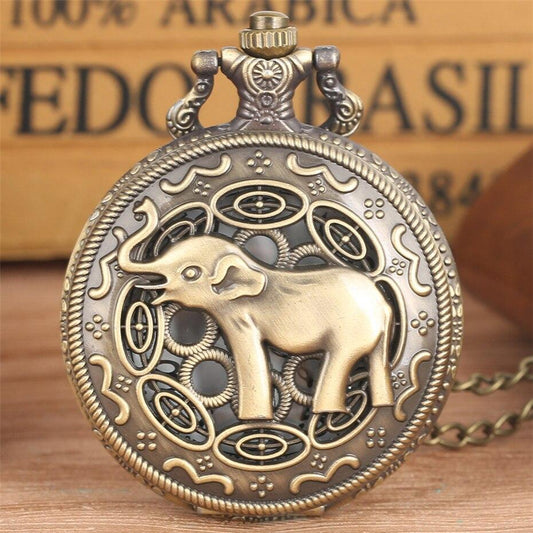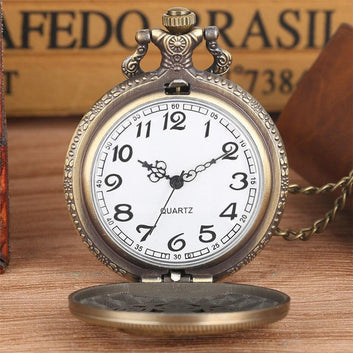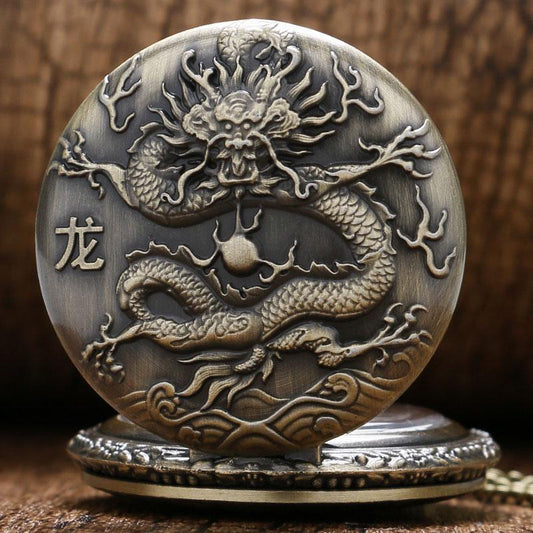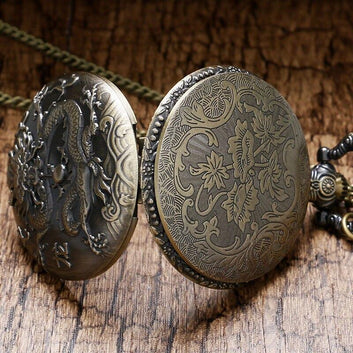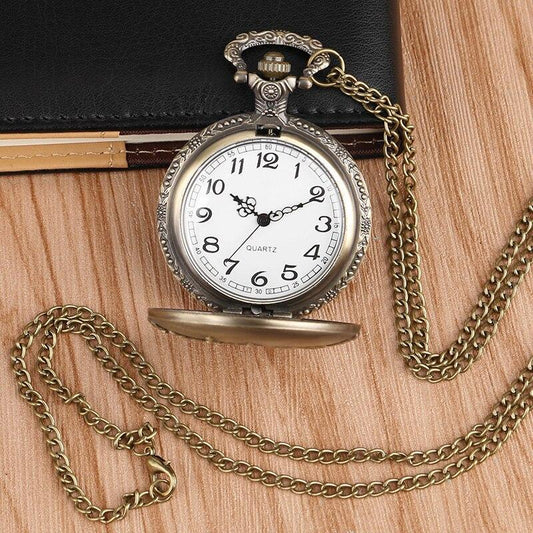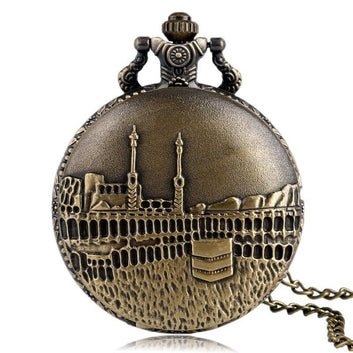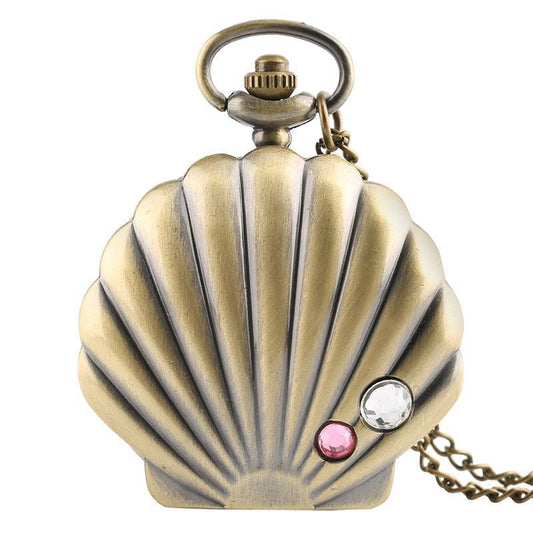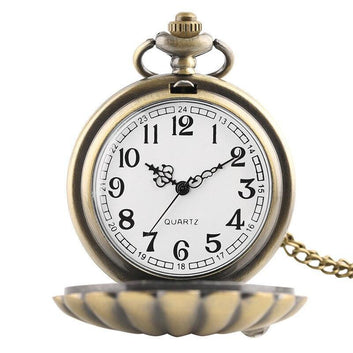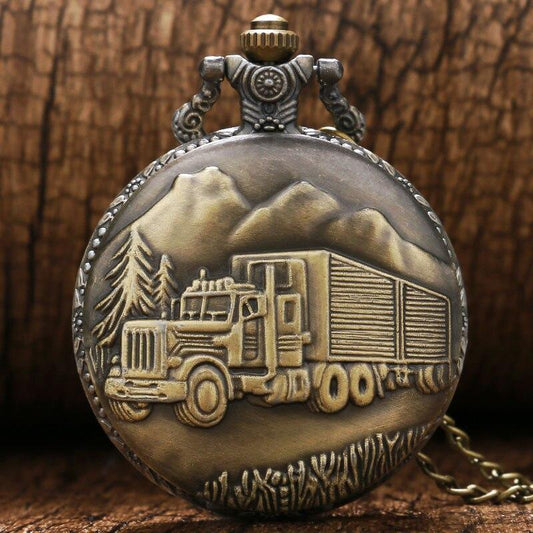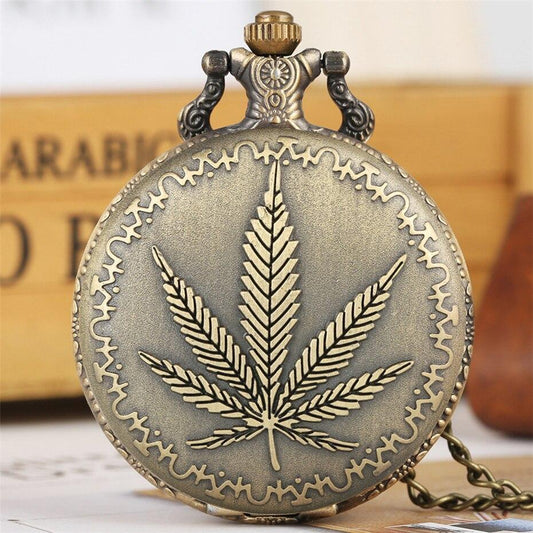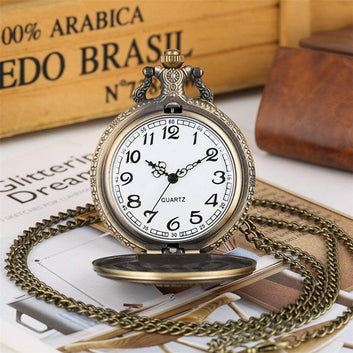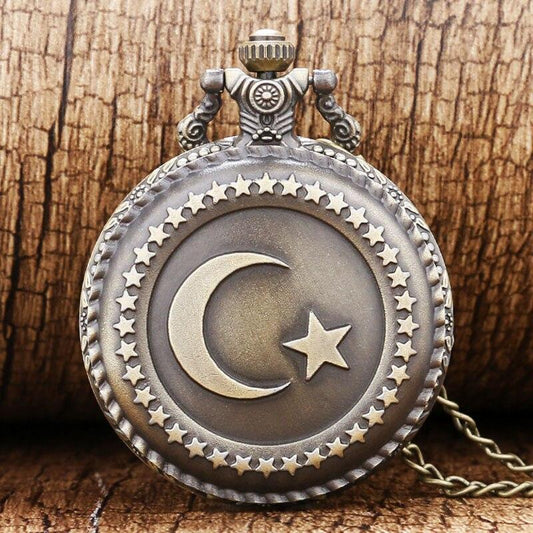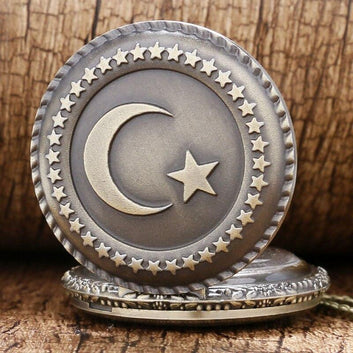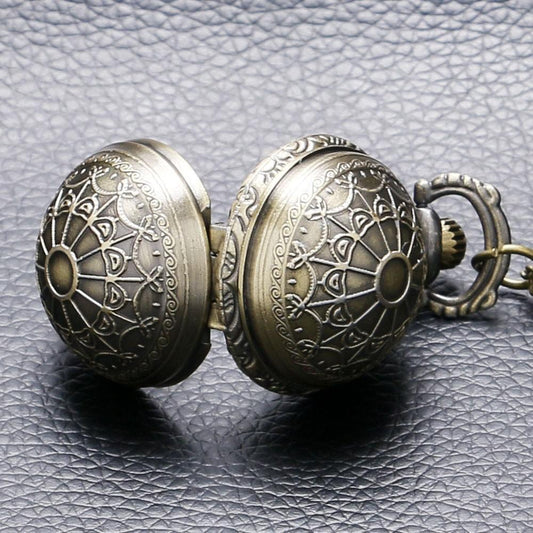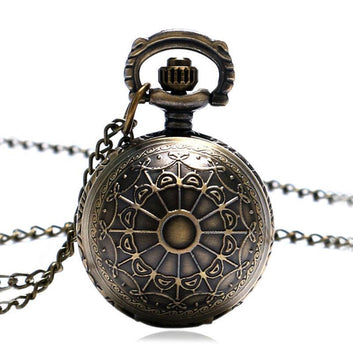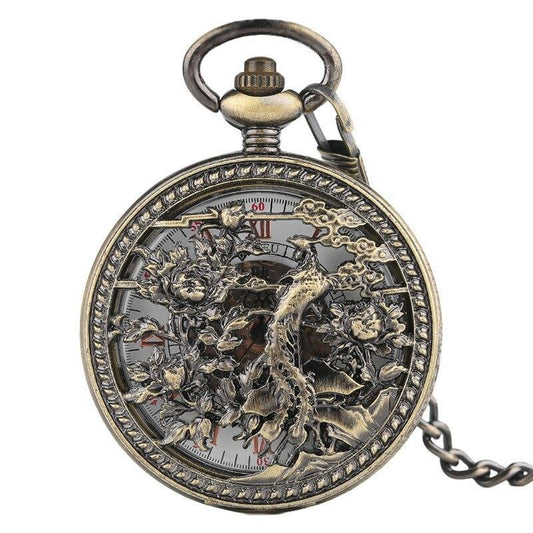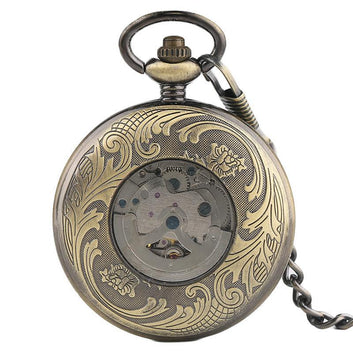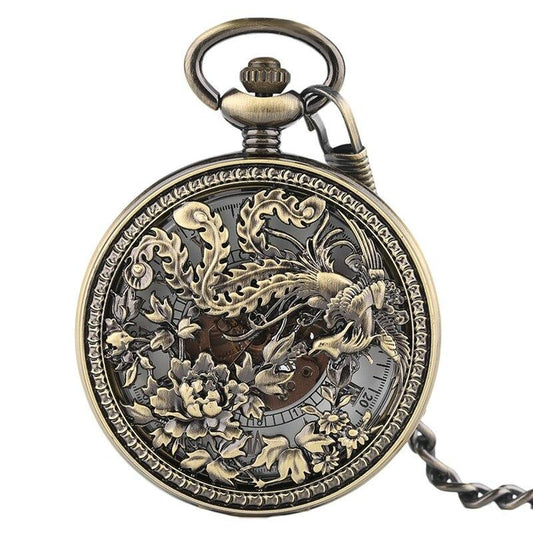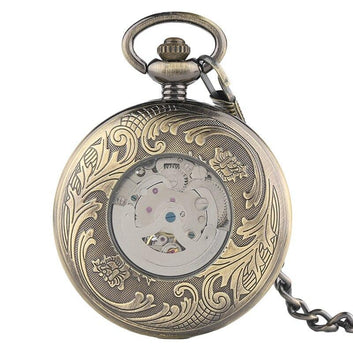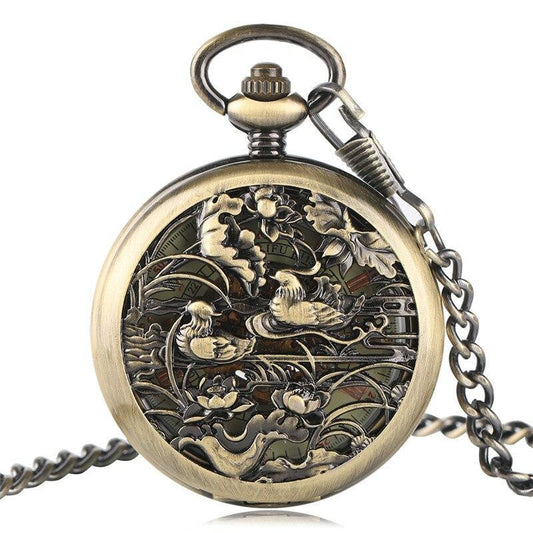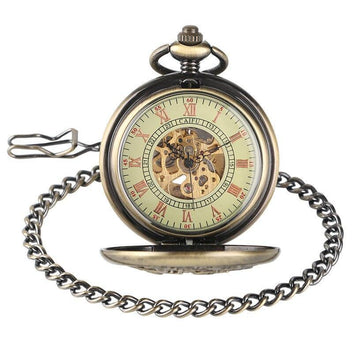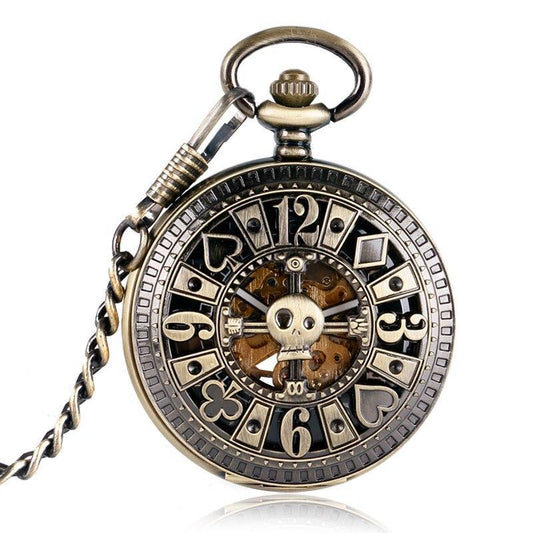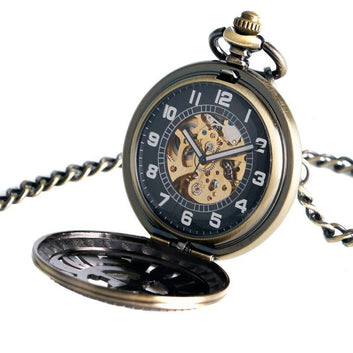- Featured
- Best selling
- Alphabetically, A-Z
- Alphabetically, Z-A
- Price, low to high
- Price, high to low
- Date, old to new
- Date, new to old
Bronze Pocket Watch
About Bronze Pocket Watches
Bronze pocket watches were initially popular in the 20th century but they’re coming back. One reason that makes mechanical watches so special is it doesn’t require a battery. It contains a mechanically wound mainspring that runs the system. But what’s the difference between copper and bronze pocket watches? It’s only the material and design. The similarity is they have a chain for attachment on the belt loop to avoid misplacing.
Our watch company provides quality unisex vintage-style timepieces, uncluding watch necklace. You can aslo take a look on our gold-tone and silver-tone watch's collections.
History of Bronze Pocket Watches.
During the 16th century, clock watches were worn around the neck. On the surface, they had a heavy grate and were made from brass and metal. However, Thomas Mudge came up with the invention of lever escapement in 1755.
The bronze pocket watches adopted the idea in manufacture. The invention made watches more accurate compared to their predecessor.
The creation constituted a mainspring that wound periodically. This forced the gears to power the balance wheel that oscillated constantly back and forth. The escapement released wheels to move forward with each swing moving the watch’s hand forward constantly to produce a ticking sound.
How to Wear a Bronze Pocket Watch.
The classical method refers to the ancient way of wearing a bronze pocket watch. Let’s take the waistcoat as an example.
So here’s how to wear your pocket watch, place the bronze pocket watch in your waistcoat pocket, pass the chain through the buttonhole, and tuck in the chain in the waistcoat pocket.
Again, for the right-handed guys, it’s advisable to put your antique watch in your left pocket and vice-versa for the left-handed. This not only ensures comfort but also keeps your main hand free because pocket watches are meant for busy people with style and class!
In conclusion, choose a bronze pocket watch that matches your taste because they come in a variety of designs and styles.
Choose a bronze pocket watch that matches your taste because they come in a variety of designs and styles. The next time you go out, you’ll definitely be the center of attention.
If you are looking for a pocket watch that is a perfect present for your loved ones and friends, then please visit our website for more information on how to choose the ideal pocket watch.
It is a classic and timeless accessory that has been used for centuries. Let’s take the watch as an example.
So here’s how to wear your vintage watch, place the bronze pocket watch in your waistcoat pocket, pass the chain through the buttonhole, and tuck in the pocket watch chain in the waistcoat pocket.
Again, for the right-handed guys, it’s advisable to put your watch in your left pocket and vice-versa for the left-handed. This not only ensures comfort but also keeps your main hand free because pocket watches are meant for busy people with style and class!
Picking up Pieces: The Parts of a Pocket Watch
There is something awfully enticing about a pocket watch. Perhaps it’s the mystery and intrigue of what time it is, what its function is, or simply just how it looks. It’s hard to pinpoint exactly why we find them so fascinating. But each time you see one, you can’t help but wonder how they work and what all their parts are.
A pocket watch is made up of several different watch parts that help tell time that get it easy to read. If you want to know more about these different pieces and how they work, read on to learn everything there is to know about pocket watches.
What is a pocket watch?
A pocket watch is a timepiece, a chronometer, typically but not always worn on one's person. The term originally referred to a portable clock that was carried in a pocket for viewing convenience. Nowadays, the term has come to describe any watch that is small enough to be carried in a pocket.
The parts of a pocket watch are usually as follows:
- A face that displays the time
- A case which holds all the other pieces of the watch and protects them from damage
- A dial which tells time by means of hour and minute hands
- The spring mechanism which winds up the mainspring to power the escapement wheel, moving the hands and winding the seconds hand
- It features an individualized piece of steel or gold called a balance wheel
Inside the Pocket Watch
The opening for the pocket watch is called a bezel. It’s used to provide protection to the glass of the watch face when it’s not in use. The hour and minute hands are used to tell time. The hour hand tells time from one o’clock to twelve o’clock, while the minute hand tells time from 12 o’clock to 3 o’clock.
The Faces of a Pocket Watch
The face of a pocket watch is the area with the numbers at the top and bottom. These are typically made out of brass or stainless steel and can be found on either side of the watch.
It is important for these faces to be sturdy because they are constantly exposed to water, sweat, and other liquids when you wear your old watch.
On most watches, there are two types of faces: the front and back. The face that is closest to your body usually has more delicate features while the one on the opposite side has more plain features or even no features at all.
The hands of a pocket watch are also known as hour-markers and indicate what time it is by showing 12 o’clock at noon, 3 o’clock in the afternoon, 6 o’clock in the evening, 9 o’clock at night and so forth.
Some people may not even notice there are hands on their pocket watch because they are easily covered up by another piece of metal called a crown which sits right next to them on a pocket watch case.
The Movement of a Pocket Watch
The first part of a pocket watch is the movement. The watch movement is the piece that makes it possible to tell time. It consists of a balance wheel, escapement, jewels, and other parts that work together to make timekeeping possible. The balance wheel is what keeps time. It spins around a fixed point on the watch’s case. When it spins, it creates an impulse that moves the hands on the dial through one hour every second.
In order to make sure this happens evenly, there are several pieces of metal called jewels that are used as pivots and gears. They help regulate how quickly the balance wheel moves and make sure it doesn’t spin too fast or too slowly. It’s also important to note that these jewels need to be properly lubricated in order for them to function properly; otherwise they will wear down over time and stop working properly.
The Plateau and Balance Weight of a Pocket Watch
The most important piece of an antique pocket watch is the plateau. This is the weighted part of the watch that will actually tell you what time it is. The balance weight, also called the escapement, is the part that helps keep time. The keystone is another piece of the watch that keeps it straight and level so it can be seen without issues.
The main spring is used to power a lot of the parts in a pocket watch including the escapement which helps to keep time as well as power everything else in a pocket watch. The hairspring or balance wheel sits at one end of this spring and will oscillate back and forth. If there was no hairspring, then there would be no need for an escapement, which would make it impossible for watches to function.
Conclusion
Bronze is considered the most versatile metal when it comes to watching making, which means there is a variety of bronze pocket watches available on the market from your local jeweler or online. Keep reading to find out how to clean a bronze pocket watch.
The bronze Fob watch is designed with a solid brass case and chain. It has a domed glass face which is scratch resistant and the hour markings are painted on it. It has a round case shape and the design is simple. It has a black leather strap with a buckle clasp for secure attachment. Besides, the watch face is surrounded by an ornamental bezel.
The pocket watch is designed with a solid case and chain. It has an antique finish that’s hand brushed and burnished to give it a darker color than ordinary silver. The hour markings are printed on the glass face which is scratch resistant. It has a round case shape too with an intricate design of etched patterns in the backside of the case that make it unique and beautiful. It also has a black leather strap with an engraved buckle clasp to secure it in place when worn around the neck or wrist.
The bronze pocket watch is made of solid brass which makes it heavier than copper ones but they are more durable than them because they don’t easily get scratches on their surface, unlike copper watches that have dark colors which can be easily scratched by any hard thing. It has a round case shape with Roman numerals or Arabic numerals hour scale printed on the glass face. The watch face is surrounded by an ornamental bezel.
The pocket watch comes in two different colors which are black and silver. Both have round case shapes and both have leather straps with buckle clasps for secure attachment to the wearer’s wrist or neck.

